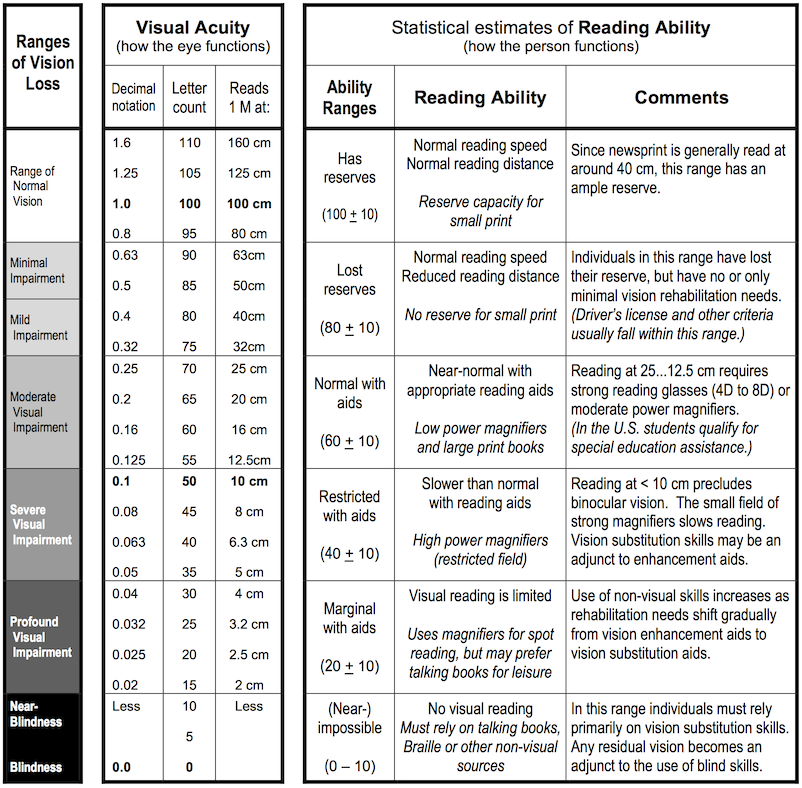Home
A comprehensive resource for safe and responsible laser use

Levels of vision loss: 2002 report on aspects and ranges of vision loss
August Colenbrander, MD
The 2002 report “Visual Standards – Aspects and Ranges of Vision Loss” has application both to laser pointer incidents that injure children or the general public, and to laser pointer incidents that injure (or claim to have injured) pilots. References to these incidents may loosely use terms such as “blindness” to describe the vision loss.
However, often the “blindness” turns out to be not a full, permanent loss of vision, but something less. As the report states, a “lack of clarity about the appropriate use of the term ‘Blindness’ has led to confusion about its definition and to varying reports about its prevalence and incidence.”
Defining levels of vision loss
One goal of the report is to help provide guidelines for the uniform use of definitions of vision loss. In various places it suggests using the following levels and sub-levels:
NORMAL VISION
LOW VISION (“Lesser degrees of vision loss, where individuals can be helped significantly by vision enhancement aids and devices.”)
Minimal vision loss
Mild vision loss
Moderate vision loss
Severe vision loss
BLINDNESS (“Total vision loss and conditions where individuals have to rely predominantly on vision substitution skills.”)
Profound vision loss
Near-total vision loss (near blindness)
Total vision loss (total blindness)
The report also notes that “[t]his terminology does not preclude the possibility that the visual condition could subsequently be improved by medical, refractive [glasses, contacts] or surgical intervention.”
Example
This chart (Table 5 in the report) gives an example of how the vision loss levels are measured objectively (Visual Acuity column) and the effect of the vision loss on reading ability.

Source
This report was compiled at the request of the International Council of Ophthalmology (ICO) and their “Vision for the Future” plan and in cooperation with the World Health Organization (WHO), the International Agency for the Prevention of Blindness (IAPB) and their joint project “Vision 2020 – the Right to Sight”.
From “Visual Standards – Aspects and Ranges of Vision Loss, with emphasis on Population Surveys,” by August Colenbrander, MD. Report prepared for the International Council of Ophthalmology at the 29th International Congress of Ophthalmology, Sydney, Australia, April 2002. Available online from the International Council of Ophthalmology website or from a local copy here at LaserPointerSafety.com.